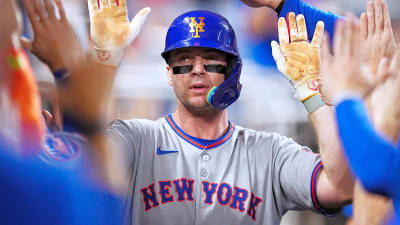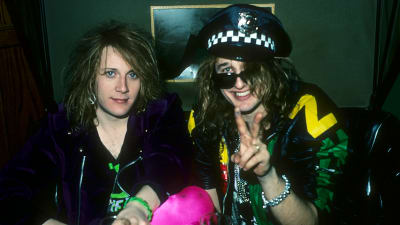Powder aims to feature only the best products and services. If you buy something via one of our links, we may earn a commission.
We all have those friends that love to chat gear and have a bike or ski quiver that reflects their obsession as much. While it turns out, I’m that friend for a lot of people, my friend Dustin is one of those people for me. I was surprised to learn this winter that Dustin’s ski quiver was not nearly as robust as his bike quiver. When I asked him about the discrepancy, he said “When I find a ski I like more than the Rustler 10, I’ll buy them.”
Dustin’s attitude about the Blizzard Rustler 10 is one that so many others share and evidence of why Blizzard’s Rustler lineup has gained somewhat of a cult following. In 2026, the Rustler 10 remains unchanged from previous year’s models, except for a fantastic topsheet graphic update, and with good reason–why change an already great ski? As the mid-width ski in the Rustler line-up, the Rustler 10 was made to be a truly do-it-all daily driver ski for hard charging skiers.
You’d be hard pressed to find a Blizzard athlete who doesn’t love the Rustlers and ski the 10s frequently. Whether it’s Zeb Schreiber taking them through the park at Palisades or Tom Peiffer competing on the FWT, these skis are almost quiver-killing for anyone who owns a pair.
Blizzard Rustler 10 Specs
- Size skied: 174cm, 180cm
- Lengths available: 162cm, 168cm, 174cm, 180cm, 186cm, 192cm
- Sidecut: 132.5mm - 102mm - 121.5mm
- Radius: 17.5m (180cm)
- Profile: directional rocker
- Weight: 1860g (180cm)
Shape, Flex, & Construction
The Rustler 10s have less tail rocker than some other freeride skis and are more stiff and stable than others that have adopted a similar identity. However, a relatively deep sidecut gives these skis a pretty short turn radius (17.5m), making them super maneuverable.
What stands out perhaps more than the shape of the Rustlers, though, is the core construction. Blizzard uses a technology they’ve coined the Trueblend Free Woodcore. Rather than using one type of wood as the base core for the ski, Blizzard uses 10-20mm wide stringers of beech, poplar, ash, and paulownia that are milled together. The stiffest woods are placed directly underneath the binding and work with the ski’s high cut to provide flex and stability when a turn is initiated. The length of these stringers are also adjusted to the specific ski length, so rather than just using the same construction for a 162cm ski and a 192cm ski, the flex profile is adjusted to the length.
The Rustler 10s specifically utilize a paulownia core that’s layered with stringers of beech and poplar, and is the same core as the brand’s lightweight touring ski, the Zero G.
To give the Rustler 10s that dependable stability, the Trueblend core is then layered with Titanal plates. However, rather than one solid sheet, these plates are segmented into side pieces and a center piece with the smallest offset in between to allow the ski to have torsional flexion throughout a turn. The result of this construction is a ski that has a progressive flex from tip to tail that’s tailored to the specific length and is super stable with the right amount of torsional flexion through a turn. Blizzard then uses a high molecular weight PTex base that keeps them running fast between tunes.
Everyone knows not to buy skis for the topsheets, but Blizzarddid update the Rustler 10 topsheets for 2026 and strayed from their normal minimalistic fade to feature some more fun graphics. All the topsheets on the brand’s skis are printed using a reduction or digital silkscreen process that takes 5-7 days to complete before being layered with TPU.
On Snow Performance
I was previously a fan of the Blizzard Rustler 11, but hadn’t actually tried the Rustler 10s prior to a trip to Austria with the brand this year. I got to try the Rustler 10s in a variety of conditions and in both a 174cm length and 180cm length. For reference, I tend to really enjoy stiff, aggressive, metal skis despite being a smaller person.
The Rustler 10s were every bit as stable and confidence inspiring as the 11s I knew. For a 102mm underfoot ski, they carve unbelievably well and keep plenty of speed on groomers. It was easy to get them up to speed on wide groomers and carve wide, fun, fast, turns. The stability of these skis is super confidence inspiring–when I’d hit a chunk of funny show or a little rock, I was never really worried that they’d falter. The short turn radius makes them quick in moguls as well as steeper, more technical terrain and that stability never fails to make you feel like a superhero at the moments you least expect it to.
In Austria, we got a bit of fresh snow as well and did spend a day skiing in a bit of a cloud. Even with low visibility (and no contacts in, but that’s a different story), I still felt confident that I could dig an edge in when I needed to or ski “normally” not quite knowing what was under that first bit of fresh snow. When things cleared, we had a fair amount of fresh snow and the Rustler 10s floated pretty well even in deeper patches, despite their 102 underfoot width. These skis are understandably a quiver-killer for many due to their versatility.
I normally ski in the 170-175cm range pretty comfortably and liked the Rustler 10 in 174cm length. However, I also gave them a try in a 180cm length and found that when trying to keep up with the Blizzard team or wanting to feel almost irresponsibly unstoppable on these skis, I liked them in a longer size. At my home Mt. Bachelor, I don’t know that I’d have the vertical or steepness on most runs to get a 180cm ski up to speed and stop it, but at a bigger, steeper mountain, I wouldn’t hesitate to add a longer pair to the quiver.
The only drawback I’ve found with the Rustler 10s (and the Rustler 11s actually), is that all that Titanal and stability means they’re not very playful. The 10 is decidedly less ski than the 11 which means it’s more fun to throw around and the confidence they inspire do make them fun. However, taking the Rustler 10 through the park or smearing around wasn’t really the most rewarding.
Comparisons
The short of it, is that if you like the Rustler 11, you will probably like the Rustler 10 and find that it’s easier to ski hardpack and groomers on because you’re not trying to get 112mm on edge. The 10 skis a bit shorter and is a bit more forgiving generally as well.
When held up to other aggressive metal skis like the Rossignol Sender Free 100, the Rustler provides a similar confidence through weird snow and in landings, but you can really feel that torsional flexion a lot more which makes them a bit more fun and certainly more responsive. Think driving a truck vs a bulldozer.
Next to other, similar width freeride skis like the Volkl Revolt 101, the Rustler 10 is not as poppy or playful. While there are most certainly folks that can play around all day on the Rustler 10 and will gleefully take it through the park, it wouldn’t necessarily be my pick for those ‘jib everything’ kind of days.
What Type of Skier is the Blizzard Rustler 10 Best For?
The Rustler 10 is not a beginner ski. You’ve gotta be driving this thing, engaging the edge, and hanging out in the front of your boots if you don’t want to be fighting it all day. But if you’re nailing those prerequisites and you want a daily driver that’s gonna take care of you and inspire a world of confidence when you take care of it, you just might be in the same camp as my friend Dustin.
The Rustler 10 is pretty much the perfect ski for those who want to explore challenging terrain, attack moguls, and fly past tourists on groomers. Aggressive, all mountain skiers will be hard pressed to find the upper limits of this ski in big mountain terrain and will enjoy it for chill groomer days just as much.
More must-reads:
- Big 12 commissioner Brett Yormark calls out Notre Dame AD Pete Bevacqua over 'egregious' behavior
- Liverpool-Mohamed Salah situation marks crisis of high expectations
- The 'AL and NL MVPs since 2000' quiz
Breaking News
Trending News
Customize Your Newsletter
 +
+
Get the latest news and rumors, customized to your favorite sports and teams. Emailed daily. Always free!








